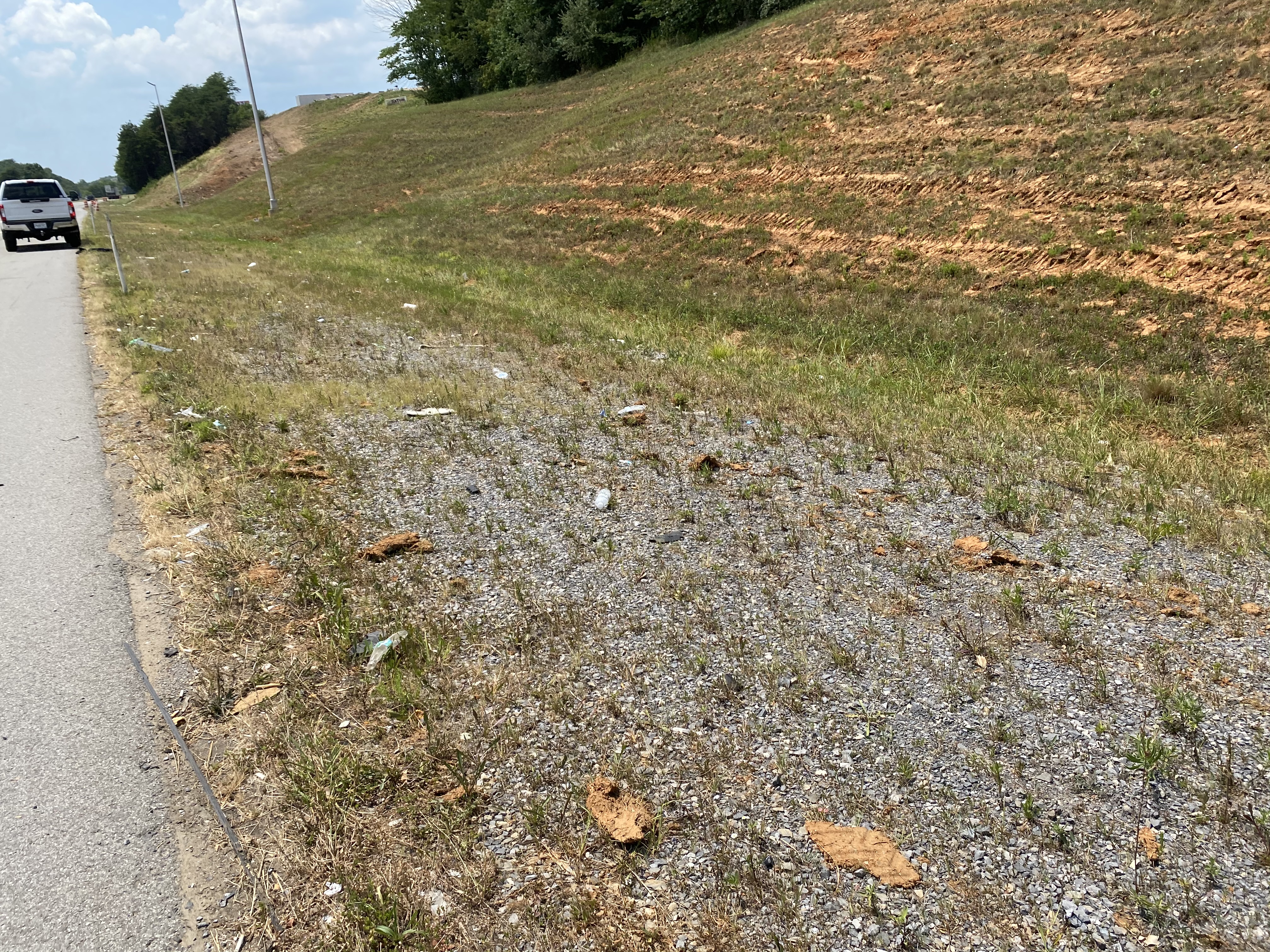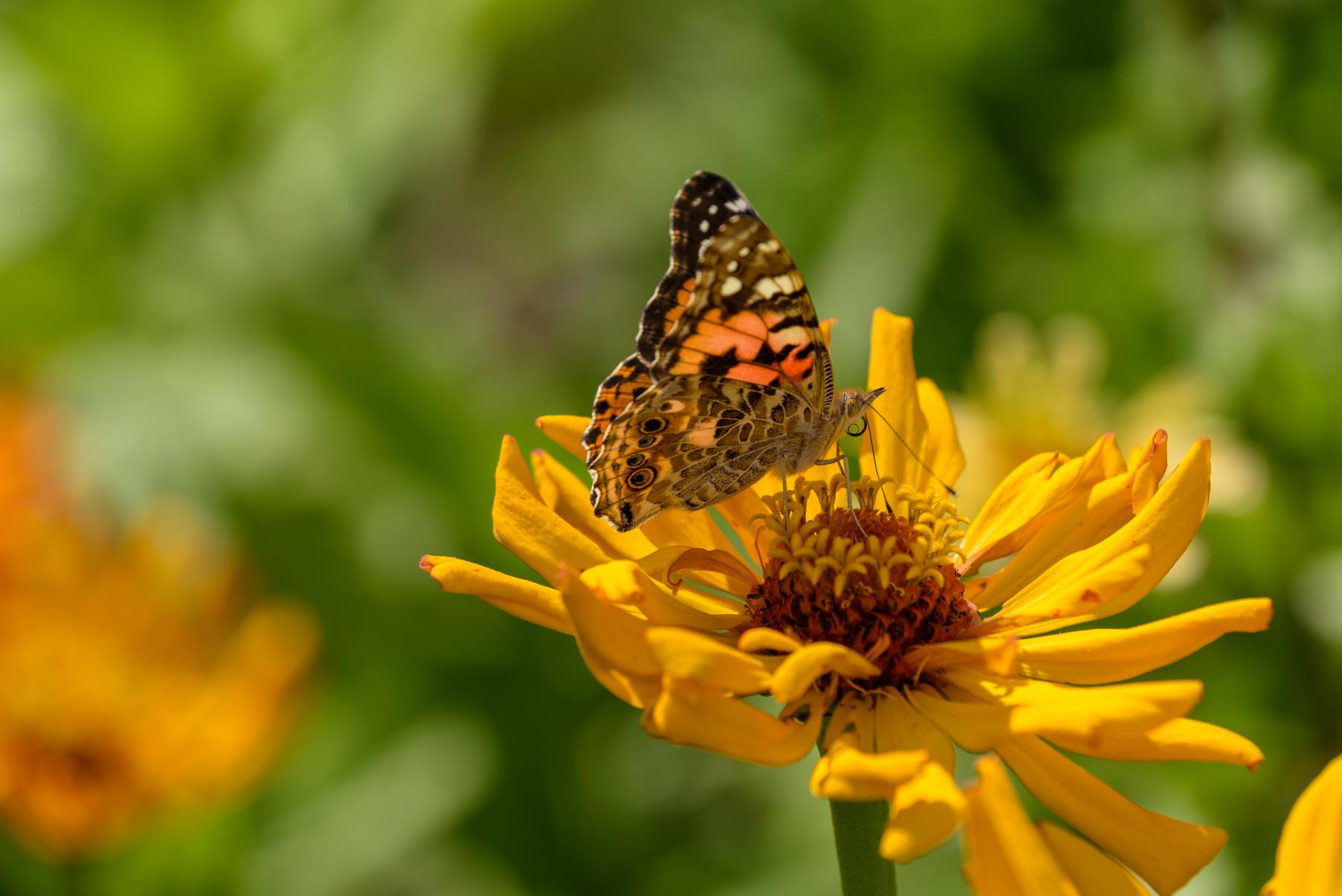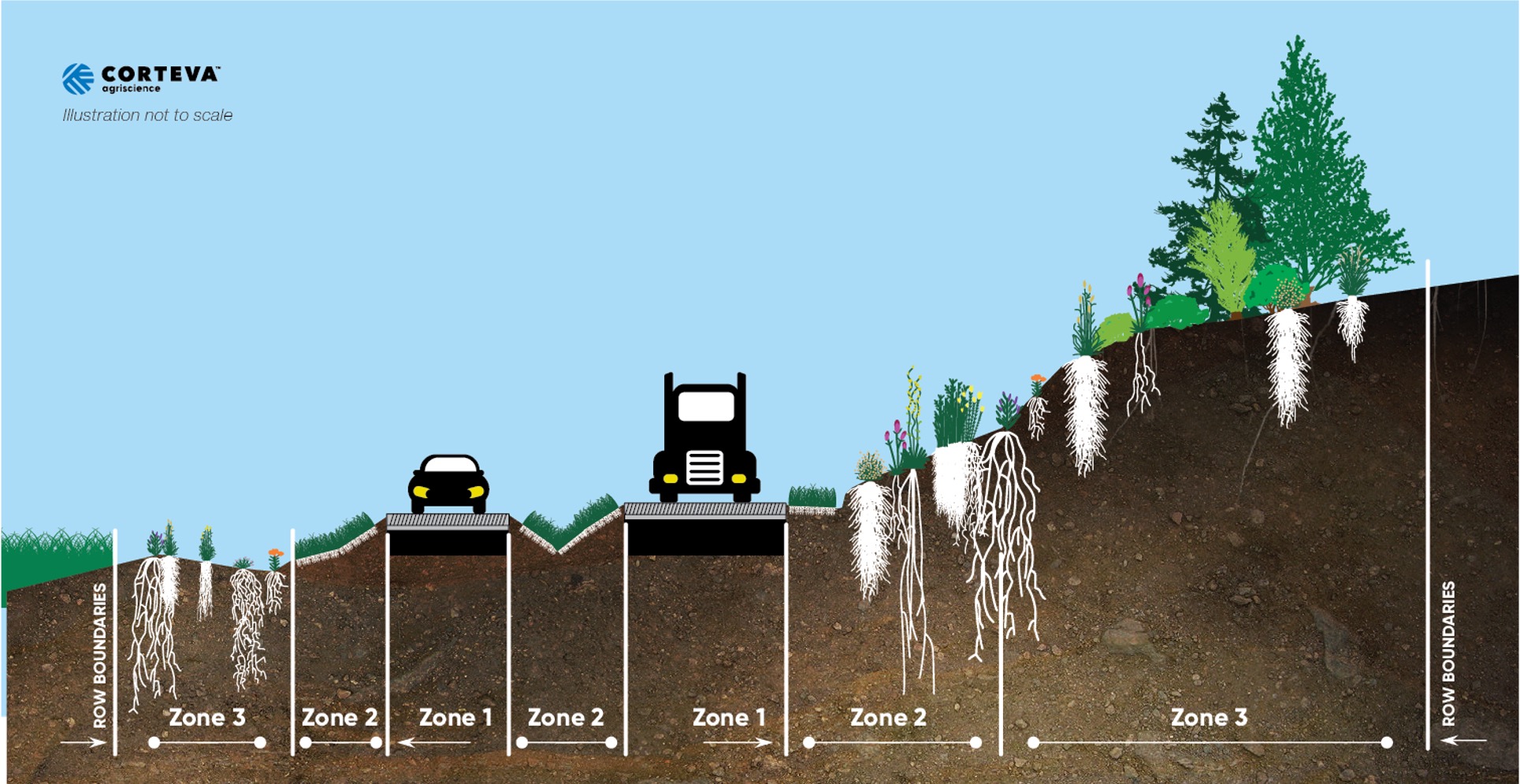Are Roadsides the Key to Environmental Sustainability?

Refined approaches to roadside vegetation management practices can lead to improved roadway safety, cost efficiency and environmental stewardship.
Refined approaches to roadside vegetation management practices can lead to improved roadway safety, cost efficiency and environmental stewardship.
Departments of transportation (DOT), county weed directors and vegetation managers constantly face the formidable challenge of controlling undesirable plant species that jeopardize roadway safety and the integrity of transportation infrastructure. Various strategies can support this work, but many commonly used practices negatively impact ecological health and environmental sustainability.
Take mechanical mowing practices for example. This management technique is commonly used to control unwanted vegetation throughout roadside rights-of-way. Current mowing strategies target undesirable plant species as effectively as they decimate desirable plants that would otherwise benefit a host of beneficial insects and animals.
Furthermore, existing mowing practices often lead to soil compaction, rutting and erosion. Associated strategies also can scatter litter and debris throughout roadway corridors, which can cause harm to automobiles and motorists alike. That’s why Corteva Agriscience is working to promote selective herbicide applications as a refined approach compared with nonselective mowing practices.

Mechanical mowing can lead to undesirable rutting along roadsides, particularly on backslopes.
“The targeted application of selective herbicides can provide multiple benefits to counties, townships and municipalities responsible for the management of roadside rights-of-way,” says Will Hatler, Field Scientist, Corteva Agriscience. “In addition to reducing the frequency of roadside mowing and associated costs, these treatments can effectively control incompatible vegetation that impedes roadway visibility, compromises the integrity of transportation infrastructure and supplants biodiverse wildlife habitat.”
Most selective herbicide applications leave desirable vegetation unharmed, yielding areas in which native plants and wildlife species can flourish. Comparatively, mowing practices stimulate seed spreading and the reestablishment of troublesome weeds and brush species that cause persistent issues throughout roadside rights-of-way and adjacent ecosystems, including:

While roadways and gravel shoulders require total vegetation control, the targeted application of selective herbicide chemistries throughout the outer edges of roadside ROW can support the development of native plants otherwise decimated by mowing-based strategies. When native grasses, flowering plants and beneficial forbs supplant incompatible vegetation, these desirable plant communities form a biological barrier against the reestablishment of incompatible plant species. In turn, their presence enhances roadway safety, infrastructure protection and the development of biodiverse habitat for nesting birds, reptiles, amphibians, pollinators and other native wildlife species.

A significant benefit of selective herbicide applications is that they can be continuously customized to meet the diverse needs of unique ROW corridors. Licensed applicators can use different chemistries and spraying equipment to maintain novel control of incompatible vegetation regardless of terrain, temperature or climate. That’s why these adaptable solutions are commonly used to maintain control of problematic plants for roadside vegetation management programs composed of three key zones:

Various chemistries can be used to achieve sustainable results in each of these zones; however, the resiliency of certain plants can slowly build a tolerance to herbicide products over time.
When resistant plants display the ability to survive and reproduce after exposure to previously effective herbicide applications, vegetation managers must reassess the chemistries in their arsenal to fortify resistance management. Simply increasing application rates will only lead to higher costs, which is why these adjustments play a pivotal role in the efficacy and cost efficiency of vegetation management programs.
“Vegetation managers may be tempted to simply use more product in hopes of reasserting control over targeted plants that show signs of herbicide tolerance,” Hatler said. “This may work on some species, but any targeted vegetation that survives those treatments is going to produce equally resistant plants. That’s why we partner with roadside vegetation managers to help them identify new chemistries that can be rotated into planned treatment cycles to mitigate resistance issues.”
Product rotations enable vegetation managers to introduce new modes of action that are engineered to optimize control of various weed and brush species. Corteva facilitates these adjustments and further enhances environmental stewardship by offering Continuum® Prescription Control and Container Management System, a closed-loop delivery solution that delivers straight product and contract mixes in returnable, refillable and easy-to-handle containers.
In addition to delivering new modes of action tailored to meet the evolving needs of roadside rights-of-way, the system also encourages sound environmental stewardship by reducing landfill waste and spillage risks. Having the option to return these containers after applying the impactful chemistries they contain allows industry practitioners to maintain novel control of problematic plant species; reduce long-term maintenance costs; and enhance safety for motorists, on-site personnel and native wildlife.
Corteva recently announced a three-year partnership with the nation’s leading upland habitat conservation group, Pheasants Forever and Quail Forever, which launched the Rights-of-Way & Energy (ROWE) Habitat Program in 2022 to improve biodiversity for wildlife throughout roadsides, energy sites and other noncrop areas.
“Roadside rights-of-way are untapped habitat resources,” said Michael Retterer, National ROW and Energy Coordinator, Pheasants Forever and Quail Forever. “These corridors represent excellent sites for biological diversity, and we’re committed to supporting this environmental transformation.”
The ROWE Habitat Program will pair the knowledge of conservation experts and wildlife biologists with vegetation control solutions and strategies recommended by Corteva Vegetation Management Specialists. These complementary insights are expected to help industry practitioners create sustainable programs that are structured to improve up to 35 million roadside, railroad and energy acres across the country.
The process to transform roadside rights-of-way into biodiverse landscapes takes time. However, making adjustments today to embrace the multistaged process can benefit transportation infrastructure, environmental sustainability and the general public for generations to come. To learn more about vegetation management strategies that can help you and your industry partners support roadway safety and the development of biodiverse wildlife habitat, visit Roadside.VegetationMgmt.com.
For over 30 years, Vistas® has covered strategies, trends and stories from across the Vegetation Management industry.